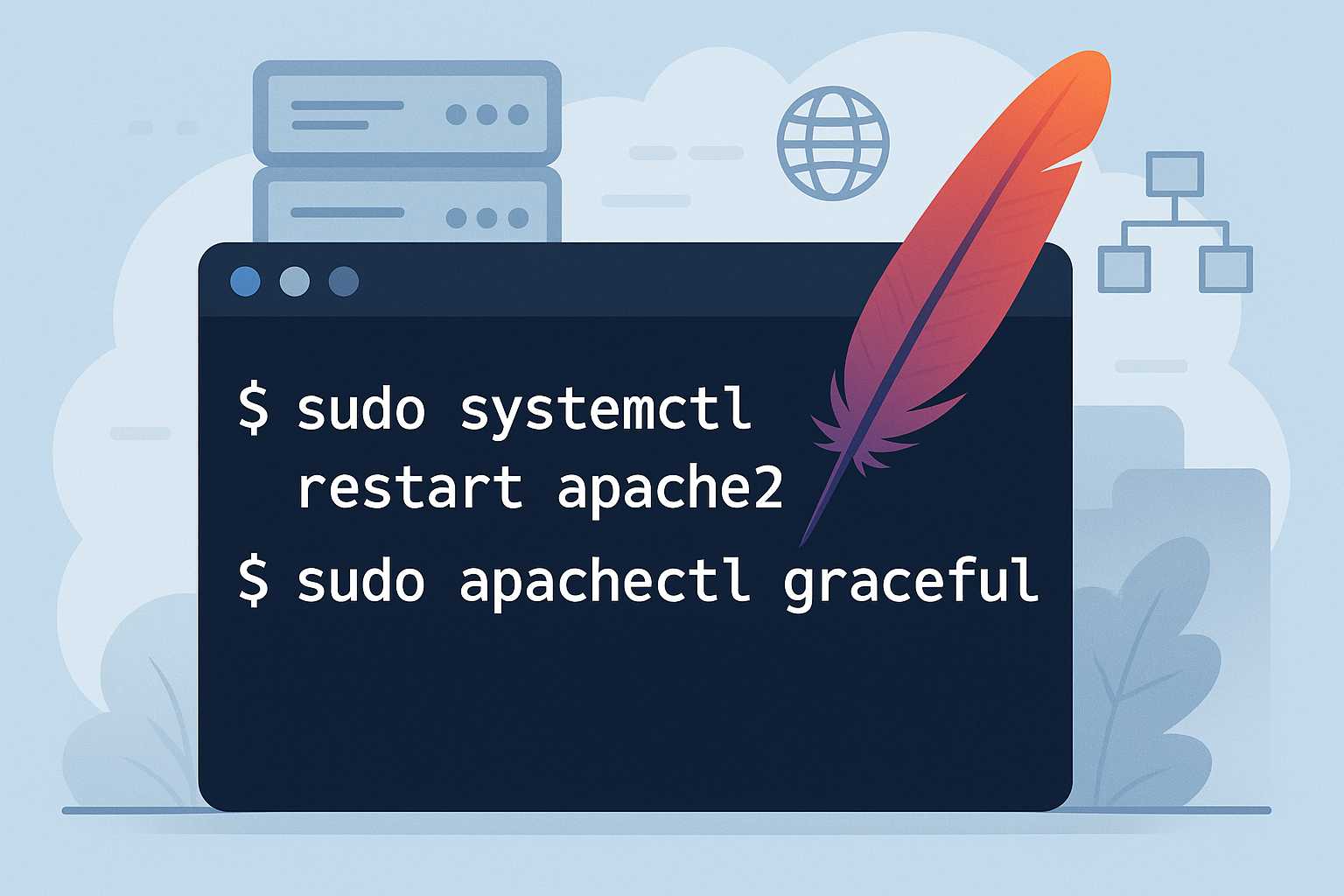Restarting the Apache web server is a common but critical task for Linux administrators. Whether you’re rolling out a configuration change, adding an SSL certificate, or troubleshooting issues, doing this properly ensures you avoid unnecessary downtime or lost connections. In this article, I’ll walk you through the safest and most effective ways to restart Apache using the command line, while addressing common pitfalls and best practices.
Why the Method Matters
Apache can be restarted in a few different ways (restart, graceful, reload). Each acts a bit differently:
- restart: Stops and then starts Apache. All active connections are immediately closed.
- graceful: Tells Apache to finish serving current requests before restarting, minimizing dropped connections.
- reload: Reloads the configuration without fully restarting the process. Some config changes may not take effect.
As a rule of thumb, prefer graceful restarts in production when possible, especially if your website is serving users.
Basic Commands for Different Linux Distributions
The exact command depends on your system’s init system:
For Most Modern Systems (systemd)
sudo systemctl restart apache2 # Ubuntu/Debian
sudo systemctl restart httpd # CentOS/RHEL/Fedora
To do a graceful reload:
sudo systemctl reload apache2 # Ubuntu/Debian
sudo systemctl reload httpd # CentOS/RHEL/Fedora
Using Apache’s apachectl Utility
If you want fine-grained control, use apachectl or apache2ctl (the command name differs by distro):
sudo apachectl graceful # Graceful restart (recommended)
sudo apachectl restart # Hard restart (immediate)
Always Check Configuration Before Restarting
A syntax error can leave your server down and your sites unavailable. Always test the config first:
sudo apachectl configtest
If you see Syntax OK, you’re safe to restart.
Pro Tips for Zero Downtime
- Combine
gracefulrestarts with off-peak deployment windows where possible. - Enable and monitor Apache’s error logs (
/var/log/apache2/error.logor/var/log/httpd/error_log) for issues immediately after a restart. - For mission-critical sites, consider load balancing so restarts can be staged.
Wrapping Up
Restarting Apache via the command line is quick, but deserves care. Prefer graceful reloads, always check your configuration, and you’ll have reliable restarts with minimal disruption. Got other Apache command-line topics you want covered? Drop me a note!
— Lenny


Leave a Reply to Maddie Cancel reply